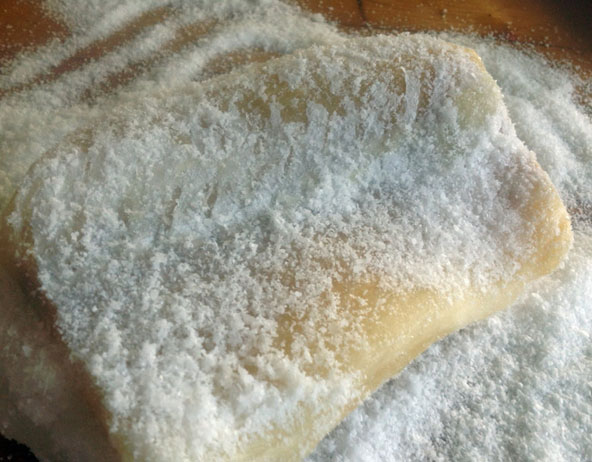Salt in frying for more delicious food
Posted On: 08/25/2016 - Viewed: 60848
Take almost any food and drop it into hot fat, and the results are delicious. All cooking techniques that use fat or oil for heat transfer are a form of frying. They go by different names- sautéing, pan-frying, deep-frying-depending on the amount of oil used, the temperature, and what is being fried, but regardless of their differences there is one thing that ties them all together: fried foods should only be salted after they are cooked.
Not only does fried food taste better with a scattering of salt crystals puncturing its richness, but adding salt too early in the frying process is downright dangerous, salt draws water out of ingredients- especially if the pieces are small, and therefore have more surface area. Water and fat don’t mix, and when the fat is hot, their lack of camaraderie can result in a good deal of spattering. For that reason alone, you should only salt fried food after it is done cooking.
There is some evidence that salt in breading or frying batter is discharged into frying oil through escaping steam and exacerbates the decomposition of the oil, which is another reason to only salt food after frying or at least to keep the salt out of the coating. Some foods may be lightly salted food against the hot oil.
Proper frying depends on starting out with dry ingredients. You can manually blot away excess moisture with paper towels, powder the surface with flour or starch to absorb surface moisture (in much the same way as one dusts oneself with powder after a bath), or coat the food in bread crumbs or batter to form a barrier between the frying fat and any moisture on the food.
One of the most important tricks to frying is to serve as quickly as possible after cooking. As the temperature of the food drops, oil is drawn from the surface to the interior. Blotting excess oil from the outside of fried foods before salting and serving helps mitigate this. Another reason to salt fried foods and serve them quickly is that the crunchy crispness of properly fried food is fleeting. After the food is cooked, moisture in the interior of the food continues to steam. As the steam travels to the surface, it cools, considering back into juice just beneath the crust. It doesn’t take long for that moisture to turn the crust from crisp to mush, but if the crust is salted on its surface, the salt wicks the moisture through the crust and out into the air, keeping the crust crisper for longer.
The right salt for our fried foods will vary enormously depending on the food and on the effect you are trying to achieve. Delicately fried foods like vegetable or seafood tempura can benefit from a dusting of a dry, powderly salt like Amabito no Moshio. A finely ground sea salt like Trapani can also work, though such salts are intense and will compete aggressively with the more delicate qualities of the food. French fries are substantial enough to withstand Trapani’s boldness, and the hardness of the salt’s crystals will provide the reassuring familiarity of a fast-food joint, albeit modestly improved. Fleur de sel is a better option. If you are making more chewy, unctuous fries of the thin Belgian or French variety, fleur de sel is essential, as the delicate crunch and mineral fullness will contribute enormously to the majesty of the food. Meats such as chicken also benefit from fleur de sel, but delicate flake salts also provide a textural complement to crispy surface without overpowering the deep, rich flavors of the meat.
We have the purest salt on Earth available on https://himalayansaltusa.com/gourmet-salt
Related News
Other News
